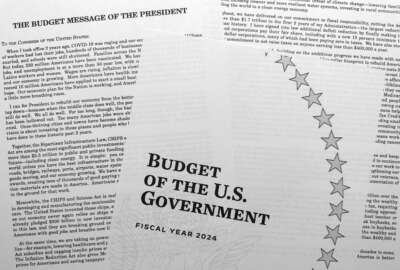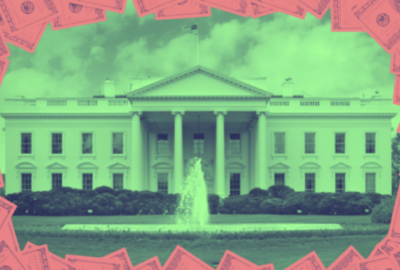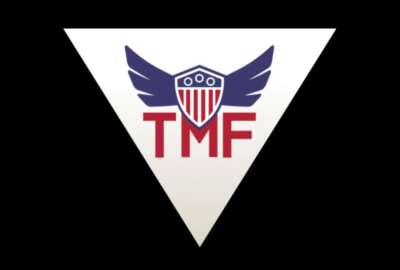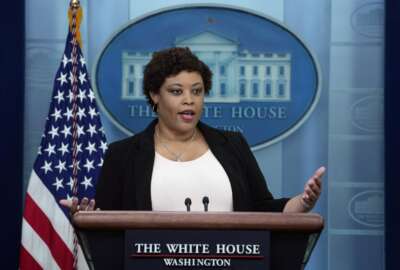For 2025 budget request, federal IT prioritizing AI, CX
The departments of Homeland Security, Energy and Treasury are among the big winners in the fiscal 2025 budget request for civilian technology.
The White House is seeking the smallest increase in spending on federal civilian IT since 2013, when the technology budget actually dropped.
The $75.1 billion request for fiscal 2025, however, isn’t pushing the same old, same old. It’s clear the Office of Management and Budget is telling agencies to make even more strategic investments in Biden administration priorities around artificial intelligence and customer experience.
“The administration is focused on understanding where agencies are on their information technology (IT) modernization journeys, determining the right investments to support secure technology integration and innovation, and planning when to implement these updates to ensure both year-over-year technological advances and progress against overarching agency timelines for achieving digital transformation,” OMB wrote in the budget request.
In all, 15 agencies would see a decrease or flat IT budget for 2025. The departments of Homeland Security, Energy and Treasury account for much of the $700 million increase over the 2024 request.
OMB is trying to balance the decrease or flat funding in agency IT budgets through the expansion of some of the governmentwide IT modernization sources.
The Federal Citizen Services Fund, which is run by the General Services Administration, is seeking $97 million, up from its $90 million request last year.
“The Federal Citizen Services (FCSF) combines public-facing services and agency-facing programs that, together, drive governmentwide transformation. The programs funded by the FCSF offer shared digital services across the federal enterprise, promote the adoption of the processes and systems that foster innovation, and support federal agencies in increasing their own capacity to drive digital transformation on behalf of the public,” GSA wrote in the request.
For 2024, House lawmakers recommended $55 million for the FCSF while the Senate fully funded the administration’s request of $90 million.
OMB’s other governmentwide account, the IT Oversight and Reform (ITOR) fund, also is seeking a significant plus up for next year. The administration is asking for $44.5 million, including $30 million for the U.S. Digital Service. Last year, OMB asked for $14 million for ITOR.
“ITOR also supports governmentwide efforts to modernize outdated and inefficient IT, secure federal IT systems and agency data, enhance oversight of artificial intelligence use and expansion in federal IT systems, expand and empower the technical workforce, increase transparency in IT spending and improve the governance and implementation of IT projects and services,” OMB wrote.
For 2024, the Senate is recommending $13.7 million and the House is allocating $8 million.
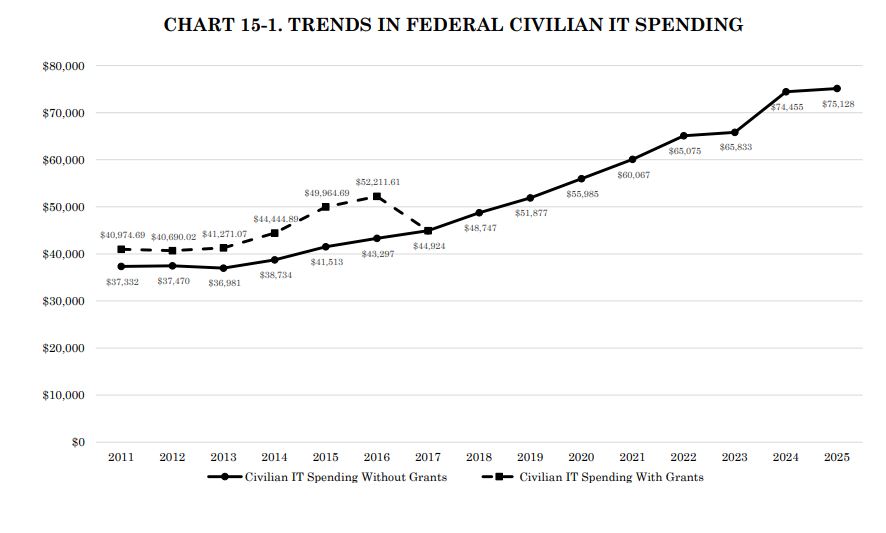
The third leg in the govermentwide IT accounts is the Technology Modernization Fund (TMF). OMB is requesting $75 million for 2025, down from its $200 million request in 2024.
“The TMF, a complement to the annual budget process, allows agencies to quickly access funding for critical IT modernization projects. Funds are invested in the most promising projects that have a high likelihood of success and a measurable impact on advancing key priorities, such as modernizing high priority systems, strengthening the cybersecurity of federal agencies, and improving public-facing digital products and services,” OMB wrote. “The TMF is a catalyst to address technology modernization needs and show what’s possible across government – and to scale lessons learned.”
Congressional support for the TMF has waned recently. Both the House and Senate zeroed out the TMF in this year’s spending bills, citing the $1 billion it received under the American Rescue Plan Act and lawmakers’ desire for OMB to require full cost-recovery for all projects.
2025 request helps prepare for AI
Outside of these governmentwide accounts, OMB and agencies are directing whatever new funding they want or existing funding toward AI and customer experience priorities.
“The budget provides $70 million for federal agencies to establish agency Chief AI Officers accountable for their agency’s use of AI and to establish minimum safeguards for agency use of AI. This includes significant additional AI management funding for the departments of State, Agriculture, Commerce, Energy, Homeland Security, Housing and Urban Development, Interior, Justice, Transportation and the Treasury, as well as the Environmental Protection Agency, the National Science Foundation, and the U.S. Agency for International Development,” OMB wrote.
The White House also is proposing $300 million in mandatory funding for AI, both to address major risks from, as well as to advance its use for public good.
“In addition to this funding, the budget includes an additional $40 million for the U.S. Digital Service, General Services Administration and Office of Personnel Management to support the National AI Talent Surge that will rapidly increase agencies’ recruitment and hiring of AI talent, fill urgent gaps at key agencies with highly qualified fellows and expand governmentwide AI training programs to upskill the existing workforce,” OMB wrote.
Around CX, the White House wants to invest more than $500 million “to strengthen activities focused on modernizing services, reducing administrative burdens, and piloting new online tools and technologies. Importantly, the budget targets efforts on deepening the expertise, capacity and capabilities that federal agencies need to meaningfully engage and better serve their customers— the American people.”
Specialized CX teams at 10 agencies
Part of that funding, the administration says, will be used to invest in specialized customer experience and digital services professionals in 10 agencies.
“Building on existing CX teams at HHS and DHS, the budget invests in the creation of complementary and dedicated teams within the Administration for Children and Families, Customs and Border Protection and the Federal Emergency Management Agency. A new departmental-level team at the Patent and Trademark Office will develop enterprise strategies to improve customer experience for America’s inventors,” the administration stated. “The budget makes additional investments in expanding CX teams, including those at the IRS, the Social Security Administration, Education’s Office of Federal Student Aid, and Interior’s Bureau of Indian Affairs. The budget will also support the retention and hiring of more than 170 full-time equivalent (FTEs) individuals with customer experience and digital service delivery training, skills, and experience. This talent can lead customer experience activities across federal agencies, including engaging with and learning from customers, mapping customer journeys, identifying pain points, analyzing quantitative and qualitative feedback and leading iterative design sprints to power service improvements.”
Additionally, OMB says the administration is asking for funding for new “Voice of Customer” programs at eight agencies to report performance data on key drivers of customer experience from a broad representation of Americans — which can drive meaningful service improvements.
“The budget also supports specific service delivery enhancements, such as the Transportation Security Administration’s pilot program to deploy customer experience strategists at airports to streamline passenger screening, and the Department of State’s efforts to build online passport renewal,” the budget stated. “
Finally, the White House also is directing funding for customer experience, including service design efforts and digital service delivery improvements at all 17 agencies that maintain the 38 High Impact Service Providers (HISPs) designated by OMB.
“The President’s 2025 Budget dedicates more than $30 million to bolster interagency life experience projects that enable more efficient administration of federally-funded benefits programs, simplify the Medicare enrollment process, and equip new parents with diapers, clothing and information on supportive services,” the budget stated. “At least 14 federal agencies will play a role in implementing these multi-agency projects. The budget also provides an additional $27 million for the Health Resources and Services Administration (HRSA) to support workforce needs and development within the Healthy Start program, which could include building on lessons learned from ongoing life experience pilot projects at HRSA.”
The administration is allocating another $55 million for 11 agencies to implement the requirements under the 21st Century Integrated Digital Experience Act. OMB says agencies could use the money to recruit talent with key digital service skills, identified through their CX action plans.
“The budget also encourages 10 agencies to further innovate by bringing on teams from the Technology Transformation Service at GSA,” OMB wrote.
Copyright © 2025 Federal News Network. All rights reserved. This website is not intended for users located within the European Economic Area.
Jason Miller is executive editor of Federal News Network and directs news coverage on the people, policy and programs of the federal government.
Follow @jmillerWFED




